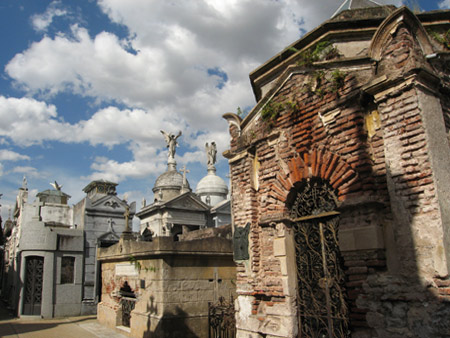
Documenting Recoleta Cemetery in Buenos Aires since 2007
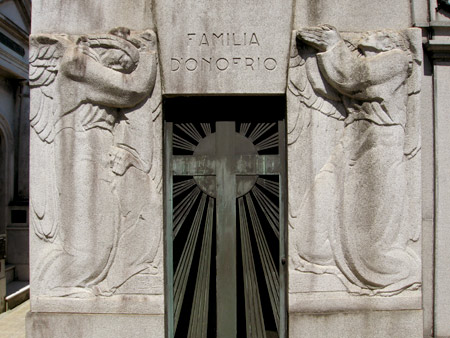
There’s not much info about who the D’Onofrios were or what they did other than having a little bit of Italian & Irish in their background. What’s more striking is the Art Deco-ness of their family mausoleum, created by one of the most gifted sculptors in Buenos Aires: Troiano Troiani.
Born in 1885 in Udine, Italy (the region bordering Austria & Slovenia), Troiani immigrated to Argentina in 1910. Italian artists were invited to participate in Argentina’s centennial festivities, as thanks in part to heavy Italian immigration since the 1880s. Troiani became a popular (yet now forgotten) artist throughout the 1930s & adorned many public & private works during that time. He decorated houses in the Caballito neighborhood, the ex-Ministry of Public Works on Avenida 9 de Julio, light fixtures in front of Congress, & several tombs in this cemetery. Troiani died in 1963, but he left a lot to admire in Buenos Aires.
Inside the D’Onofrio mausoleum is a Byzantine-inspired image of the crucifixion & a textured stained glass panel:
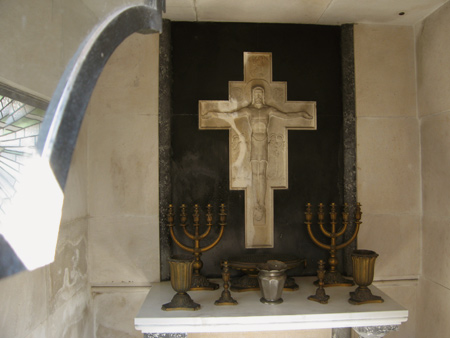
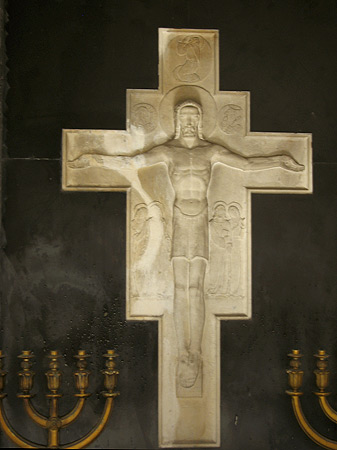
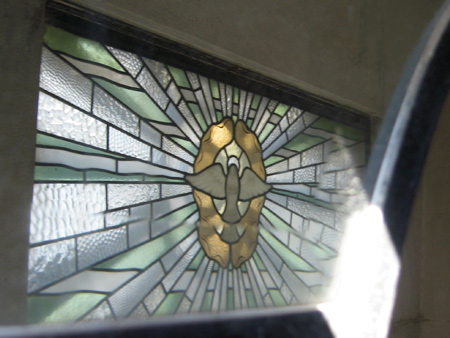
If there’s an interior that is interesting or particularly photogenic, don’t be intimidated by a closed door. Glass doors often have multiple openings large enough to point a camera lens through. Even if there doesn’t appear to be much to see, use your camera as a spyscope. Side windows are also another option to get a sneak peek.
3 Comments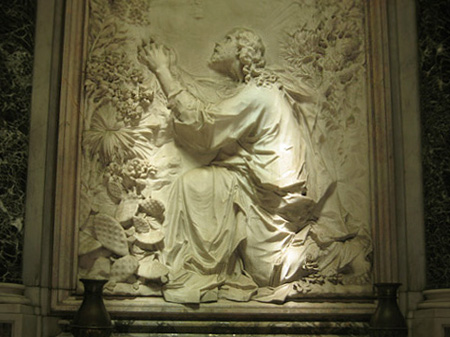
A very close friend of literary great Jorge Luis Borges was Adolfo Bioy Casares, also a respected Argentine author. Often referred to as just Bioy, he devoted his life to writing since he inherited wealth from his family’s cattle-ranching fortune.
In contrast to the challenging prose of Borges, Bioy wrote in a fresh, easy-to-read style absent of ornamentation and linguistic acrobatics. His most famous novel is “The Invention of Morel,” a suspenseful story set on a mysterious island & widely regarded as his masterpiece. The stories of Bioy often take a surreal direction. One short story uncovers a mysterious passage to Uruguay while another is a black comedy about a man whose wife swaps bodies with a dog. If you want to explore modern Argentine literature, Bioy is a great place to start.
Bioy was married to Silvina Ocampo, the youngest sister of Victoria Ocampo. Silvina was also an accomplished short story writer whose macabre tales often centered around childhood. Bioy met Borges in 1932 at the home of Victoria Ocampo & became friends for decades. A whopping 1,600 page diary by Bioy about their friendship is now available in English.
Bioy and Silvina were known for having a very unconventional marriage in which both had a series of lovers… Silvina obviously followed her older sister’s example.
Although the exterior has little of interest, mid- to late afternoon is the best time for viewing or photographing the interior. Since this tomb faces west, the interior too dark to appreciate any other time of day.
Leave a Comment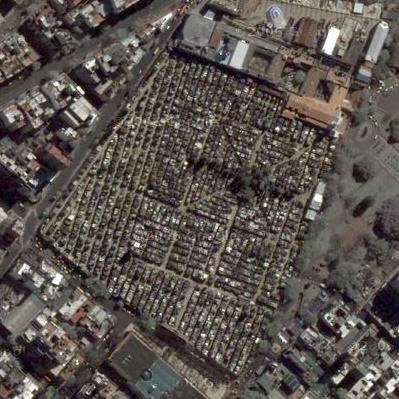
Image of Recoleta Cemetery captured from Google Maps. Argentine elite have packed themselves into a small space that’s the equivalent of about four city blocks in Buenos Aires.
Leave a Comment